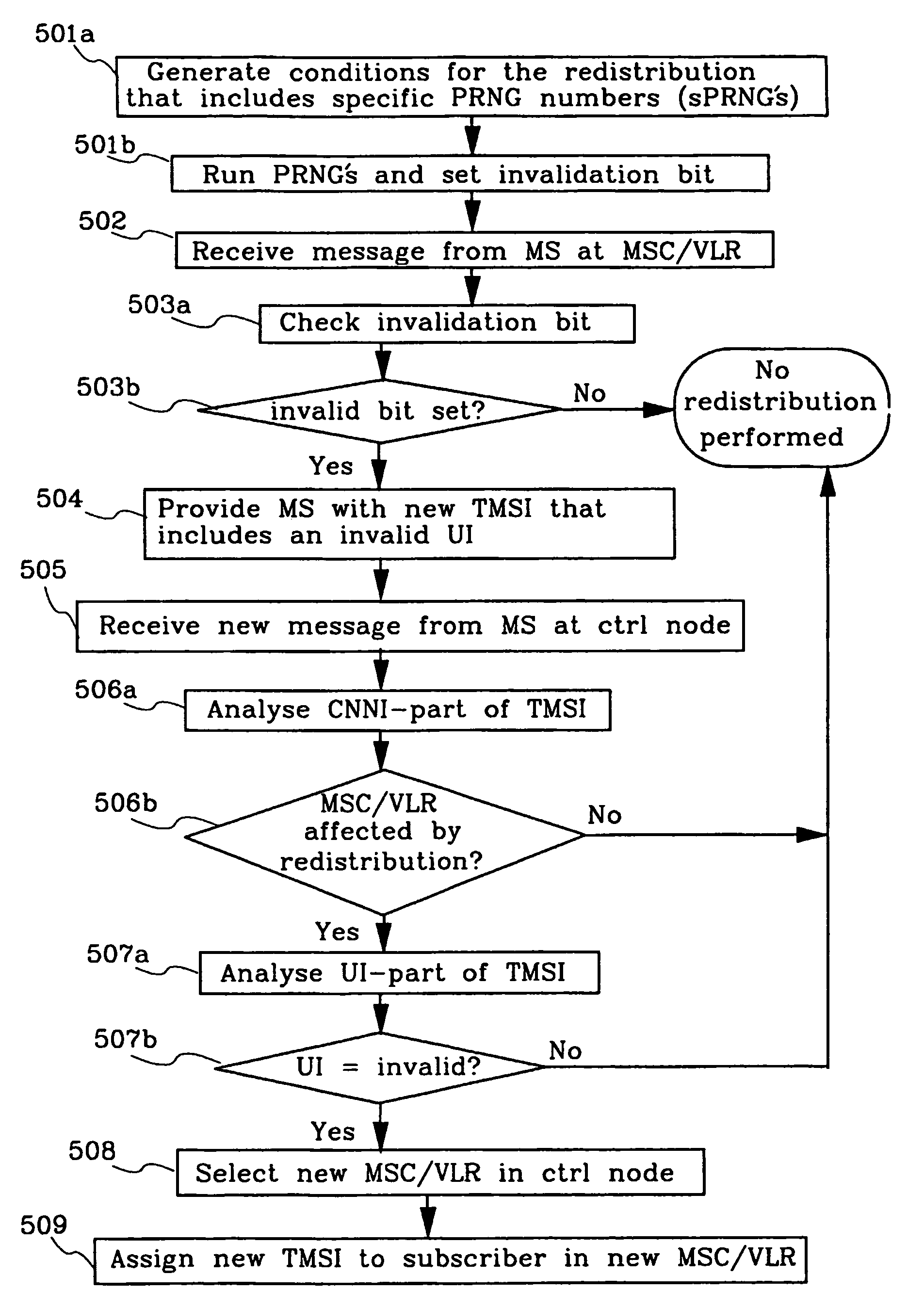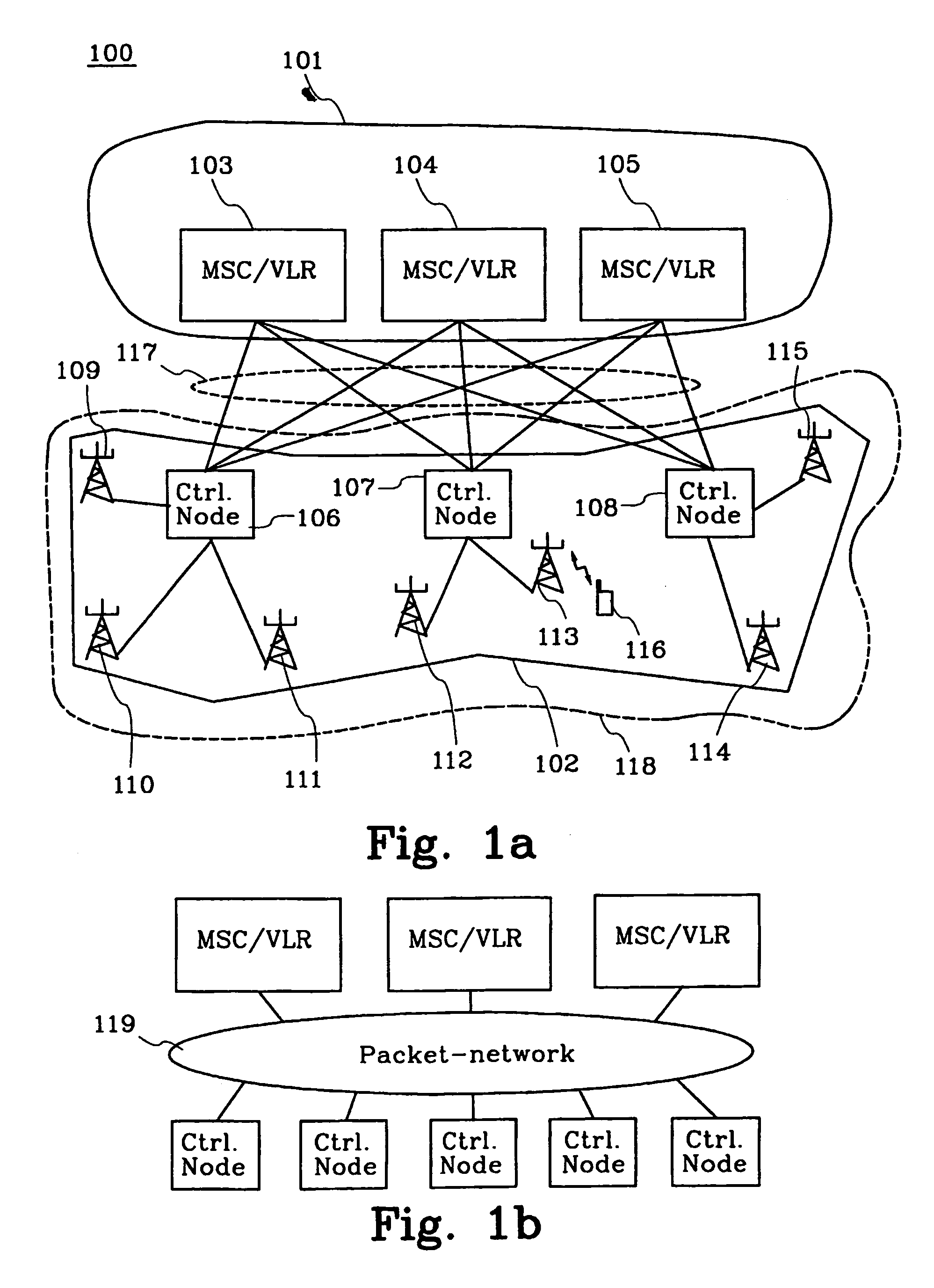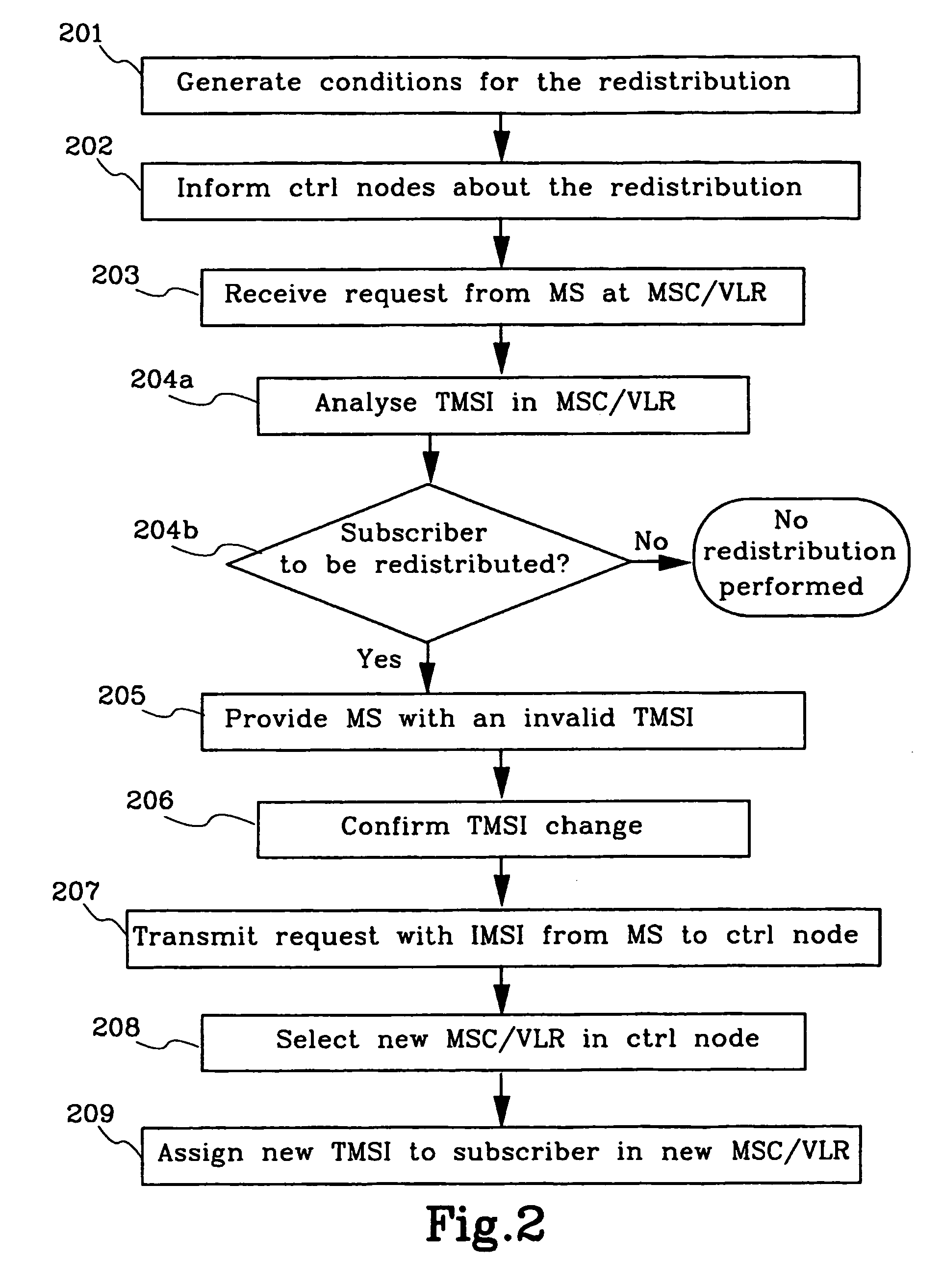Method and means for redistribution of subscriber information in UMTS networks where the nodes are arranged in pools
a subscriber information and subscriber technology, applied in the field of cellular radio communication, can solve the problems of unbalanced load and unbalanced load, and achieve the effect of not affecting reachability and service availability of users
- Summary
- Abstract
- Description
- Claims
- Application Information
AI Technical Summary
Benefits of technology
Problems solved by technology
Method used
Image
Examples
third embodiment
[0056]According to a step 201 above, all the subscribers in MSC / VLR 104 are to be affected by redistribution. But if e.g. only 50% where to be redistributed in this embodiment there would be a need to select those 50% out of the subscribers in MSC / VLR 104. This selection can as an example be made by random and specifically by the use of PRNG's. This is further described after the third embodiment where the PRNG's have been further described.
[0057]FIG. 3 illustrates a flowchart of a second embodiment of the method according to the present invention. The method is applied in the system that is illustrated in FIG. 1a. This means that there will be references to FIG. 1a as well as to FIG. 3. The subscriber that uses the mobile station 116 is currently registered in MSC / VLR 104. A load-unbalance has been detected in the MSC-pool 101 and a decision to activate the redistribution is taken. This decision can be made by the operator or automatically based on the operation of a load supervisi...
first embodiment
[0080]The PRNG's can, as previously stated, also be used in the first embodiment according to FIG. 2, if less than 100% of the subscribers are to be affected by the redistribution, i.e. to randomly select a certain fraction of the subscribers in MSC / VLR 104. The PRNG is run for all present users in MSC / VLR 104, one by one, during e.g. step 202. The result is then stored in MSC / VLR 104 by, e.g., setting an invalidation bit in the record of the selected subscriber. When a subscriber accesses the system in step 203 will the MSC / VLR 104 check this invalidation bit in step 204b, and if it is marked as invalid, continue with step 205–209 as previously described. An alternative to this is to run the PRNG each time a user accesses the MSC / VLR 104 and make the selection then. In the latter case is the TMSI used as seed to ensure the same outcome for each mobile originating access, in the former case can any seed be used as the outcome is only decided once and then stored.
[0081]The PRNG's can...
fourth embodiment
[0099]In the embodiments above, the CNNI's and / or UI's in the TMSI's (the CNNI may also be separated from the TMSI) are analysed by the access network nodes to detect if they are part of an invalid TMSI etc. This can be made in a number of ways. In a first example, by comparing e.g. the UI against a stored “template” of an invalid UI or against a list of invalid UI's in an invalid-table (e.g. in step 507a in the fourth embodiment). This list of invalid UI's may contain different UI's associated with different actions, e.g. different invalid UI's may indicate different MSC / VLR's to which control nodes should forward the corresponding messages (and to which the subscriber information will be redistributed etc.)
PUM
 Login to View More
Login to View More Abstract
Description
Claims
Application Information
 Login to View More
Login to View More - R&D
- Intellectual Property
- Life Sciences
- Materials
- Tech Scout
- Unparalleled Data Quality
- Higher Quality Content
- 60% Fewer Hallucinations
Browse by: Latest US Patents, China's latest patents, Technical Efficacy Thesaurus, Application Domain, Technology Topic, Popular Technical Reports.
© 2025 PatSnap. All rights reserved.Legal|Privacy policy|Modern Slavery Act Transparency Statement|Sitemap|About US| Contact US: help@patsnap.com



